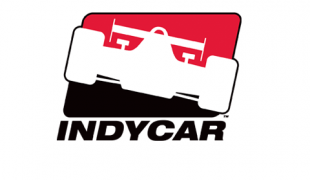Double-header race procedures announced
IndyCar News/Releases, INDYCAR PR — By More Front Wing Staff on January 22, 2013 5:53 pm[Source: INDYCAR press release]
*
INDIANAPOLIS (Tuesday, Jan. 22, 2013) – INDYCAR announced today event procedures for its IZOD IndyCar Series doubleheader weekends, which will debut at Belle Isle, Toronto and Houston in 2013.
“Doubleheaders are something we wanted to introduce this year to improve the fan experience on a given race weekend. With two races, there certainly is a lot more entertainment and competition,” said Beaux Barfield, Race Director, IZOD IndyCar Series. “We took that one step further and decided to introduce additional activities for our race programs that we’ve been considering for the past few years.
Qualifications for the first race of the doubleheader weekend will take place on Friday and follow the three rounds of eliminations, culminating in the Firestone Fast Six. The first segment, however, has been reduced from 15 minutes to 10 minutes to match subsequent segments. Firestone tire usage during the three segments of road/street qualifying will be determined by the entrant instead of a mandatory allocation. One set of tires was allowed during each of the three segments in 2012. The change further opens up strategy, allowing the teams the choice of saving a new set of tires for the race or to use during qualifying.
Qualifications for the second race will be held on Saturday morning and consist of a 30-minute session for all cars, with the starting order set by lap time.
Standing starts will be implemented for Race 1 at both Toronto in July and Houston in October. Race 2 at the venues will have a traditional North American rolling start following a few pace laps.
“We are currently investigating adding a standing start to another race or two this season,” said Barfield, who noted standing starts will not be used at Belle Isle based on examining the recent reconfiguration of a section of the street circuit. Both races at Belle Isle will have rolling starts.
For races featuring standing starts, cars will be staged on the street courses with the start controlled by a trackside lighting system.
“The lighting system is all FIA spec in terms of how the light sequence and the process works,” Barfield said. “Once the cars are in their grid spots following the formation lap, the five lights will come on one second apart. Once all five lights have lit up, between .5 of a second and 1.5 seconds all the lights will go out, which signifies the start of the race.”
The lighting system will be available for driver practice at the venues.
“We would leave the lighting system at pit out and designate a pit stall where drivers can stage themselves and practice standing start launches during official practice sessions,” Barfield said. “It’s a way for drivers to practice their own launches and get used to the lighting system.”
An in-car lighting system was eschewed because of inherent problems associated with two-way radios. Trackside lighting requires “one point of communication from Race Control to the base of the lights and the light system,” according to Barfield.
“We have access to a two-way transponder system that makes it straightforward and simple on how to police jump-starts,” he said.
Both races at each of the three doubleheader venues will be full distance with equal points.Pit location for both races of a doubleheader weekend will be determined by the entrant’s qualifications result at the previous race event. Qualifications for Race 2 will determine pit location for the next event.
Standing Starts Overview
Countdown:
• A “drivers to your cars” command will be given via radio by Race Control.
• A “drivers in your cars” command will be given via radio by Race Control.
• A 3-minute announcement will be made by Race Control at which time only three crew members may remain with each race car.
• The “drivers start your engines” command will be given via Race Control.
• The Safety Car will roll and the drivers will follow in single file, starting order.
Formation lap:
• During the formation lap, drivers will remain in starting order with no overtaking and the speed will be set by the Safety Car. Coming to a complete stop to undertake practice starts is prohibited.
Grid:
• At the end of the formation lap, the Safety Car will pull away from the field and the field will take their starting positions. The front wheels of the car must remain behind the grid line.
• A 5-second announcement will be made via radio by Race Control prior to the start of the light sequence.
• The red lights will illuminate one by one.
• The race starts once all red lights go out.
• A false start shall be declared when a race car moves forward or is out of its assigned position during the light sequence.
• A penalty will be imposed for a false start judged by the Officials. Decisions by the Officials are not subject to protest and appeal.
• An Official may be stationed at each light on the starting grid. A waving yellow flag by this Official is an advisory of a disabled race car.
Aborted start:
• If the start is aborted, the yellow lights will illuminate. Instructions will be given to teams via the radio. The starting procedure may be abandoned and the Safety Car will be dispatched. Any competitors whose actions result in an aborted start will restart from the rear of the field.
Timing and Scoring:
• The timing of the race and all scoring shall commence when the light sequence is completed.
Tags: Verizon IndyCar Series - Administration







